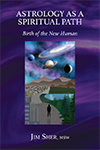
Witness
This article could have just as easily been titled “The Power of Witnessing.” The concept is the same. It was Jiddu Krishnamurti who wrote the following quote: “To observe without evaluating is the highest form of ‘Intelligence’.” When I read that and began to explore it, the effects were like an explosion in my consciousness. First, he is completely redefining the nature of intelligence. Further he is turning it on its head. He is taking the common notion of intelligence and affirming the notion that what transforms our consciousness is a completely different approach to what is it to be human and open to a new way of ‘Being.’
This approach was a surprising idea, but as I began to talk to people about it as well as other ‘meditation systems’, I realized something else. Many people have the underlying belief that if the mind becomes quiet, or even silent, that we will be in a state of stupidity. We won’t be able to do math, solve problems, and live in this complex world of today. Perhaps, logically this makes some sense. But to know for sure that this would be the result, one would have to take up this form of meditation and find out if that is really the case. What shook me though is that I felt I had come across a bias that the modern mind has against meditation. Maybe it’s not a conscious bias, but a real one nevertheless. Further that each of us may need to explore whether or not we have this belief system buried in our own unconscious.
I know that many of my readers will not share this view, but as I began to teach meditation, I learned that meditation evokes a level of fear that is not easily explained away. In fact, the fear can be great enough that people who enroll in a meditation class often find themselves dealing with the resistance to meditate at all. This may not make sense at first, but it actually does make sense once one realizes that meditation exposes an entire area of fears. Moreover, these fears seem insurmountable, once they have been seen or made conscious. Many years ago when I began studying meditation through a Buddhist organization connected to Chogyam Trungpa Rimpoche, I read his books most of which had to do with how a person can deal with fear. He, like many others, emphasized having a ‘warrior’s spirit’ as a necessary aspect of going into this practice.
There is the view that meditation has the purpose of quieting the mind. Of course, this is a perfectly understandable motivation. But before that can happen, we must discover tools that help us deal with fear and other negative emotions, such as anger, frustration, hatred, etc. Otherwise, meditation can evoke so much fear that one might have a hard time even starting.
What is the first response to coming up against fear when we start sitting in the midst of our chaotic mind? For many, it is to try to stop the mind and its fears and negative emotions. The feeling can be so overwhelming that we feel the need to escape the encounter with these emotions. What we discover is that the fears get even bigger. The more we escape the larger they become.
Now we get to the title of the article. What we may decide to try and what in my experience does work, is to simply observe and accept whatever has come up of its own accord. This is the formula that seems to work. It may seem to be counter-intuitive, but it is worth attempting. One reason it works is because of the fact that our thoughts are not our own or ‘who we are’.
Yes, we are not our thoughts. We may consider that we are, but one can experience this truth. So, as we get ‘distance’ from our thoughts, which is what occurs when we simply observe our thoughts without evaluating, they begin to become less important and that leads to even more distance to where we see that we are not the thoughts at all. That’s the theory of how and why it works.
There is another tool that can help us and is why I teach meditation. It can be helpful to work with others as we learn how to meditate and confront our fears and negative emotions. My classes are more than just about learning technique. I go deeply into the barriers to meditation and how we can work with them in a constructive manner. Also, it helps us when we see that the issues we are having are also shared by many others. We take every obstacle less personally and that helps us get more distance and we can approach the way we deal with the contents of our mind in a new way. In other words, we find that the tool of observing impartially works and we become confident that we can go deeper into repressed material. This enables us to become fearless and this is what leads to having a truly quiet mind. What we seek is freedom from not only our superficial thoughts, but also our deepest belief systems many of which remain in our unconscious. Freedom from these deep seeded fears is how we transform our consciousness and awaken to our real essence.
I will soon be announcing a free introductory lecture so I can describe more on how I approach teaching meditation. I also will go into other techniques that can be very helpful additions to a meditation practice.




Also inspired by this article to resume meditating! Thank you, Jim!
My response to your article was to get up, turn off the radio, sit down and meditate for the first time in probably a year and a half (outside of a yoga class). Thank you for this reminder that I have the option to stop judging myself.
Hi Jim,
I read Krishnmurti when I was a teenager and was blown away. I went to see him speak in Switzerland and ended up a student one of his schools for 3 years, Brockwood Park in England.
I saw Krishnaji many times, both in public talks and close up. He looked different than anyone I have ever seen and I have seen other major spiritual teachers and other very famous and exceptional people. He was extremely alive, alert, observant and present like I have never seen in another human being. He was very passionate about what he had to say and deeply concerned about humanity and the earth. His head seemed to vibrate and seemed to be getting bigger. Looking into his eyes was like looking into the ocean, there was no barrier there. When you stood next to hims, there was a sense of NO ONE THERE, yet he was very focused and accomplished a lot in his life. It never occurred to me to worship him and he certainly didn’t want that. I would think to myself when he gave his talks “How did this guy get here? How can this be?” I found (and still find) his teachings absolutely stunning, like seeing the Grand Canyon. No, it definitely doesn’t make you stupid, though K was quieter then most people, he did have a good sense of humor and curiosity about the world.
In group meditation, whether three or four or in a large gathering meditating together, the process of becoming quiet, of breathing in tandem, of acknowledging the many person approach-way to meditational realization, can provide a pathway of mutual support in overcoming resistance and fearful hesitation.
The invitation, “Come! Join us!” can be an introduction, settling into the silent joys of contemplation, in stillness or perhaps with gentle music or natural sounds. Somehow the sound of water in a fountain or running over rapids can bring us into communion with natural reality. The sweet tones of a harp can also bring settling of anxiety and tension.
But, our task is to give way, to relax into meditation, to rest the mind in healing silence.
Excellent article, Jim. I learned to meditate in 1968 by an 80 year old yogi. He landed in Chicago, and taught classes at a local YMCA. Eastern philosophy was just coming to the U.S., due to the interest The Beatles had stirred up, and young people were seeking, ways to achieve higher consciousness. I know you can relate to this, Jim. Being a long time meditator, it is so interesting to me how complicated a simple meditation class appears to have become. Has our current techno-society affected the younger generations in ways that make it so unfathomable and fearful that mind can be silenced. Perhaps explaining the role of the ego, which is simply, as my former Yogi told me..the guard dog at the gate of consciousness. ‘Ego learns in meditation to step aside. It is not ‘killed’ as some Japanese Zen masters, would have the students believe. It has an important job to do, and as it learns to be more agreeable, and flexible, new levels of awareness open through meditation.’ Sri Nehrod.